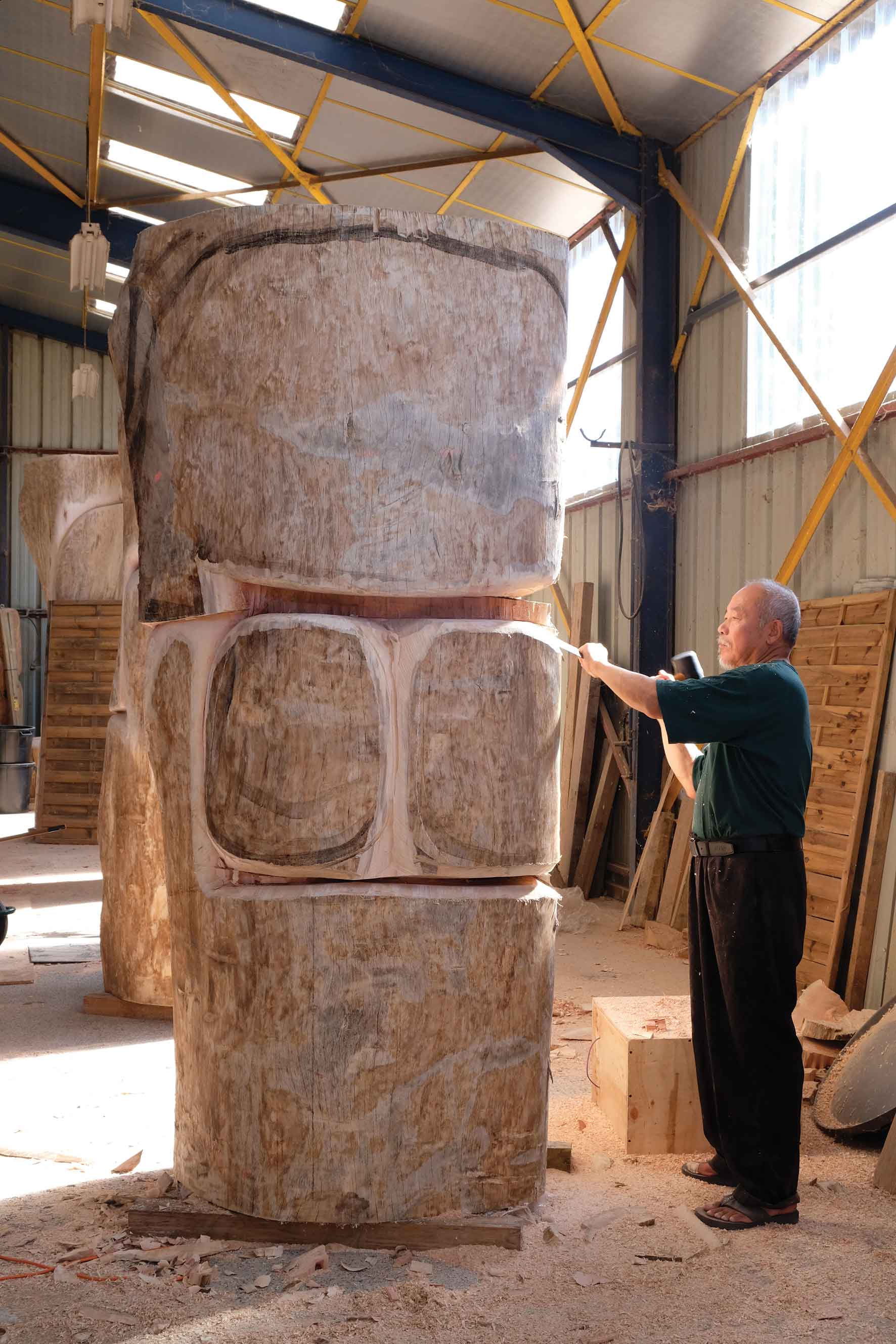Estimated reading time: 4 minutes
The Rodin Museum invited Wang Keping to take over the sculpture garden as his studio during May and early June. The project is a perfect fit for the museum, as like Rodin, Wang Keping is also close to, and influenced by, nature. The artist is working in the open-air studio of the garden to create four new monumental sculptures.
The artist starts with the whole tree trunk and directly carves and forms the wood to bring out their natural sensual forms that are transformed into works of art that are full of emotion and poetry. This is the first time that the Rodin Museum have asked Wang Keping to work at the museum and it is a good opportunity for the public to watch the artist at work and discover the work in progress.
Born in 1949 near Beijing into a family of scholars, Wang Keping experienced the upheavals of the Cultural Revolution. He was a worker, soldier, actor and writer, before becoming a sculptor. Self-taught, and without any academic training, the artist explained that he invented his very particular technique by repetition and experience. Deeply Chinese in influence and culture, he does not, however, produce what he calls ‘Chinese art’.
Member of The Stars group
Wang Keping was also one of the founding members of the first non-conformist artist’s group in China called The Stars (xing xing), the art group led by Huang Rui (b 1952) and Ma Dasheng (b 1952), which set the stage for avant-garde art in China. The Stars were experimental artists, mainly painters, with a few sculptors such as Wang Keping. The group originally attracted attention and later widespread fame with their unsanctioned exhibition of 23 artists, which was shown in a park outside the National Art Museum in Beijing in September 1979.
It became one of the first public displays of experimental art in China and was eventually shut down by the police after three days. However, the movement continued until the early 1980s, before many of the artist left China for their safety. Wang Keping participated in a Stars Group show in 1980, but after facing political censorship he left China to go into exile in France in 1984.
Using Wood for Sculptures
In a 2004 interview with Asian Art Newspaper, Wang Keping explained how he originally began to use wood for his sculptures: ‘When I was still living in China, steel and iron were almost impossible to obtain by a private individual. Wood, for example, in the 1970s, was still controlled by the government, and consequently, it was not easily available. However, sometimes, if you were lucky, you could still find some pieces in the city. In my case, I was fortunate in that downstairs from where I lived there was a coal factory. In order to operate and produce coal, the factory needed wood to light the fires. As is often the case with factories, some wood was left over, so I would go and collect it for my own use. The factory wood was extremely hard, but nevertheless I still managed to use it’.
‘This is how I started experimenting and using wood in my work. I would say that the main difference between my work and other sculptors is that they apply colour onto the wood and rarely use or take advantage of the wood’s shape and structure. I just use natural wood and rely on the material’s inherent quality; the material comes from nature, it is very intimate and smooth. I play with the contrasts of the wood, making some parts more shiny, and others darker – the shiny parts tend to be the parts that people like to touch when looking at the sculpture. I think this makes the final result more striking. I want to make sure that my work looks totally natural and try not to pay too much to the details. I want to show the power of nature, so I follow the pattern of the wood – a branch, for example, may eventually become a leg’.
Living in France
In France, Wang Keping travels through the country and visits sawmills in search of perfect trees of different species with which to work. Once stripped, the trunk will then suggest the form that the sculpture will take. He first uses a chainsaw and then progresses to increasingly fine tools to make the wood speak. Then the works is sanded many times until the right shape emerges from the wood and reveals ‘the soul’ and energy trapped within. These are often rounded, soft, sensual feminine shapes, with a surface as smooth as skin. Wang Keping carefully reveals these natural contours in the wood, paying particular attention to the grain and any knots or flaws in the wood to evoke figurative representations that are so characteristic of his work.
Wang Keping was inspired, in his early years by masters of European Modernist sculpture and his search today stems from Daoist ideas of simplicity and nature, material and the non-material, physical and spiritual, with each piece unique – defying definition. He explained, ‘The celebration of women in the work of Rodin has left a deep imprint on my creative journey, guiding my head and my hands, moving from conception to realization, from 1978 until today, of images printed in Beijing to the Rodin Museum in Paris’. Life has gone full circle.
Until 5 June, 2022, Rodin Museum, Paris, musee-rodin.fr






